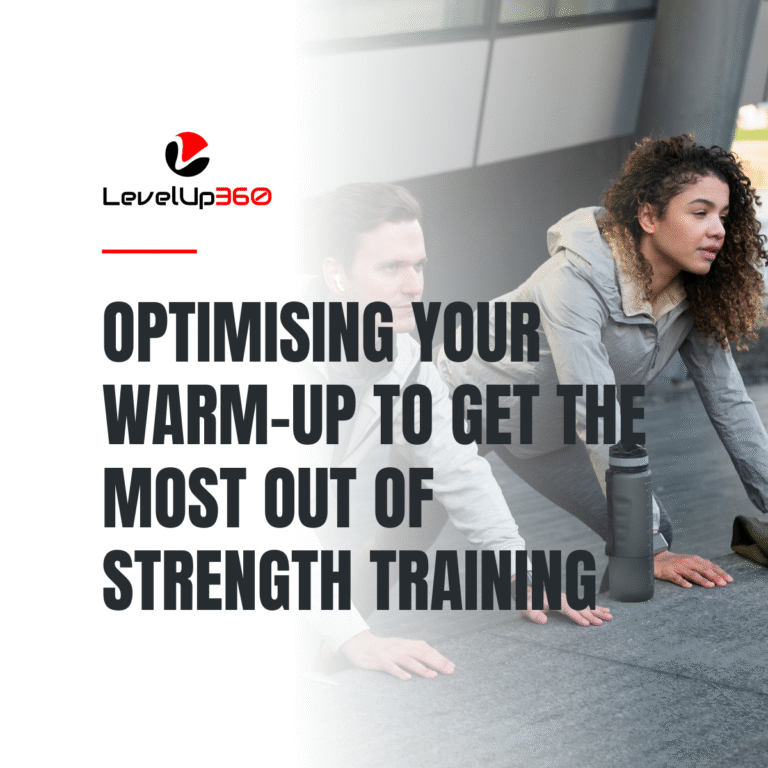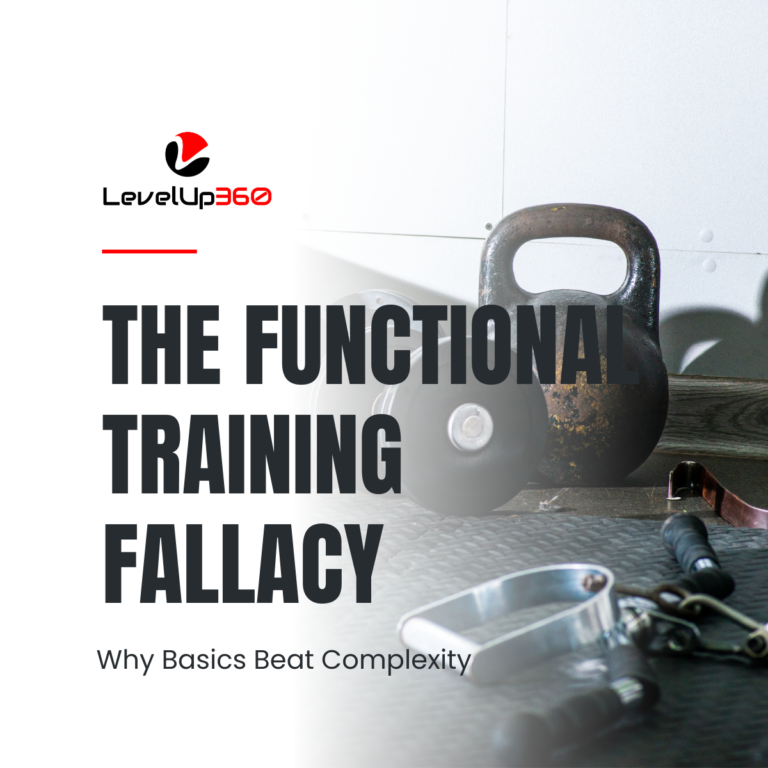
Mastering the Basics of Resistance Training: A Guide for Beginners
If you have been following my content for a while, you probably know that while many people associate resistance training with bodybuilding or sports performance, it is also a key tool for improving overall health and longevity. As a beginner, navigating the vast sea of information and techniques can be overwhelming so I have decided to put together the basic principles of resistance training with the aim to help you navigate your journey successfully. Whether you are a complete novice looking to start your resistance training journey or you are still a novice (less than 3 years of resistance training), this article is for you.
Make a fundamental shift in mindset. It's not about quantity, but quality.
More Is Not Always Better
Let’s debunk a common misconception—more is not necessarily better. Many beginners fall into the trap of thinking that gruelling, hours-long workouts are the key to success. Let me emphasize that exercise difficulty is about more than just sweating or heavy breathing. Instead, focus on progressively getting stronger, feeling muscular tension, and challenging yourself during each set.
This is a fundamental shift in mindset. It’s not about quantity, but quality. To track your progress, consider recording your workouts. Compare your execution to expert examples. By focusing on proper form and gradually increasing the intensity, you’ll achieve better results in less time and significantly minimize the risk of injury.
Finding the Optimal Balance
Now, you might wonder, how do you find the optimal balance between optimal and practical training? It’s all about tailoring your fitness journey to your needs and goals. As a beginner, you don’t need to plunge headfirst into the complexity of strength curves or force vectors. Instead, start with the basics, focusing on proper form, progressive overload, and listening to your body.
Over time, as you gain experience and confidence, you can delve deeper into the technical aspects of resistance training. Remember, it’s a journey, and there’s no rush. You’ll find your sweet spot where optimal meets practical, ensuring both effectiveness and sustainability.
What Makes a Good Workout?
So, what makes a good workout? Firstly, ensure you live to train another day. Avoid pushing yourself to the point of immobility; it’s counterproductive. Secondly, seek progression. Compare your performance week to week, aiming for increased loads and improved form. Finally, ask yourself if you pushed your limits. If you felt like you could resume a set almost immediately after finishing, it’s time to up the challenge.
Before diving into the specifics of your training routine, it’s crucial to define your fitness goal. Are you aspiring to be an athlete, a bodybuilder, or perhaps a powerlifter? Your objectives will significantly influence your training program.
- Athlete: If you’re aiming to improve your performance in a particular sport, your training will be sport-specific. Focus on exercises and techniques that enhance the skills required for your sport.
- Bodybuilder: Bodybuilders prioritize muscle hypertrophy and aesthetics. Your training should revolve around a combination of compound and isolation exercises to target different muscle groups.
- Powerlifter: Powerlifters concentrate on three primary lifts: squats, deadlifts, and bench presses. Your training will emphasize strength development in these key movements.
Another critical factor in determining your workout routine is your training age. Training age refers to the number of years you’ve been consistently involved in resistance training.
- Novice (1-3 years of experience): If you’re relatively new to lifting, you’ll need a different approach compared to advanced lifters. Your body is hypersensitive to training stimuli, so you won’t require as many training days per week.
- Intermediate (3-5 years of experience): Those with a few years of experience can handle a slightly more intense training routine. You might incorporate more advanced techniques and variations of exercises.
- Advanced (6+ years of experience): If you’ve been dedicated to lifting for many years, your body might require higher training frequencies and more complex programming to continue making progress.
How Often Should I Work Out?

For beginners, it’s recommended to start with 2-3 days of training per week. This frequency provides sufficient stimulus for muscle growth while allowing for adequate recovery. Remember, as a novice, you’re more prone to experiencing muscle soreness, so it’s crucial not to overdo it.
How Many Sets Should I Do?
Rather than fixating on daily sets, it’s more beneficial to think in terms of weekly sets per muscle group. The key is to find the minimum effective volume your body needs per week to stimulate growth. Quality beats quantity. Beginners should aim for 8-10 weekly sets per muscle group. This moderate volume is sufficient for beginners to see progress.
What Split Should I Chose?
For novices, a full-body workout routine is highly effective. This approach ensures that you hit each muscle group multiple times per week while keeping each session manageable and focused. Full body workouts have many benefits for beginners (and for advanced lifters as well), including:
- Progressive Overload: It’s important to note that adopting a full-body workout doesn’t mean reducing your training volume. You’ll still be performing the same 8-10 sets you did for each muscle group, but here’s the kicker: you’ll distribute this volume across 2-3 workout days which will allow you to be fresher and optimize the signal for muscle growth.
Consider this scenario: In a typical body-part split routine, you’re often fatigued by the time you reach the last couple of exercises for a particular muscle group. However, when you spread these sets over 2-3 days, you approach each exercise with fresh energy. This means you can potentially lift heavier weights or complete more repetitions. And in the world of muscle growth, the holy grail is none other than progressive overload. It’s the key to achieving those coveted gains.
- Training Frequency: For beginner lifters, practice makes perfect. Ever wonder why your strength skyrockets during the initial stages of your fitness journey? The answer lies in neuromuscular movement patterns. As you engage in resistance training, your central nervous system becomes more proficient at coordinating major lifts. Now, imagine practising these movements over 2-3 days instead of cramming them into one.
This approach significantly enhances the chances of ingraining proper lifting patterns. By dividing your training into multiple sessions, you not only accumulate more practice but also give your central nervous system ample opportunities to refine these crucial patterns. So, if you’re a beginner, consider the wisdom of distributing your workouts over several days.
- Consistency, Even When Life Gets Busy: Life can get hectic, and sometimes, you might miss a scheduled workout. This can be a significant setback, especially if you follow a body-part split routine. Imagine forgetting a gym day and suddenly realizing you’ve gone 1-2 weeks without training a specific muscle group! The frustration is palpable.
Now, contrast this with a full-body workout plan. Even if you occasionally miss a session, you’ll still have 1-2 more chances during the week to target that muscle group. This flexibility is a lifeline for maintaining a consistent workout regimen. It frees you from the fear of missing workouts due to life’s unexpected curveballs.
- Stimulus: Here’s a critical factor to consider when opting for a full-body program: the minimum effective dose. As a beginner, your body responds exuberantly to new stimuli. The novelty of resistance training ignites growth like a spark in a dark room. You don’t need an excessive volume of sets and repetitions.
The reason seasoned pros engage in high-volume workouts is their advanced level. They require that extra volume to squeeze out minuscule gains. However, for beginners, a mere 8-10 weekly sets per muscle group can trigger substantial growth. An intermediate lifter might aim for 12-15 sets, and the advanced athlete could need 15+ sets to see marginal progress.
The temptation to add more sets can be alluring, but beware of “junk volume.” Additional work doesn’t always translate to additional benefits. In your first year of training, the key is to focus on the minimum effective dose – the precise amount of stimulus required to ignite substantial growth. It’s the sweet spot for beginners, delivering results without unnecessary strain.
How to Choose the Right Weight

One of the most common questions from newcomers to the gym is, “How do I choose the right weight?” It’s a valid concern because selecting the appropriate weight can significantly impact your progress.
The answer, as mentioned earlier, lies in a mix of assessment and gradual progression. Here’s a simplified approach:
- Baseline Week: Begin with a weight that you believe is manageable for the prescribed repetitions and sets. The first week is about setting a foundation.
- Self-Assessment: After each set, gauge how you feel. Could you go heavier, or did the weight feel just right? Make incremental adjustments accordingly.
- Progressive Overload: In subsequent weeks, aim to start your sets with slightly heavier weights. This gradual increase in intensity challenges your muscles and promotes growth.
- Form Matters: Ensure you’re not sacrificing your form for the sake of lifting heavier weights. If your technique falters, it’s time to reconsider the load and maintain proper execution.
- Use Video: If possible, record your sets. Watching yourself can provide valuable insights into your form and performance. It’s a reality check that can reveal untapped potential.
- Train With a Partner: A reliable training partner can be a tremendous asset. They can spot you, provide encouragement, and challenge you to push past your perceived limits.
Incorporating these steps into your training routine allows for a systematic approach to weight selection. It ensures that you’re always challenging yourself without compromising your form or safety.
How Much Rest Between Sets?
What sets resistance training apart from other forms of exercise is its unique ability to build muscle and strength directly and significantly impact metabolism. Unlike other types of exercise, resistance training involves short, intense bursts of effort. It’s a fundamental difference that affects how you should approach your workouts.
Rest is crucial in resistance training. While pushing through a workout without adequate rest might make you sweat and feel like you’re working hard, it’s more likely to build endurance than strength. Endurance and strength are not the same. Strength can be explosive or slow, but it’s always characterized by short bursts of intense effort.
To maximize strength and muscle gains, it’s essential to rest between sets of exercises. Without proper rest, you’re more likely to tap into endurance training, which is less effective for building strength and muscle. The optimal rest period typically falls between 30 seconds to 3 minutes, depending on your specific goals and the exercise being performed.
How to Maintain Focus During Workouts
It’s no secret that maintaining concentration in a world filled with distractions can be a challenge. Here are some powerful techniques to help you stay in the zone during your workouts:
- Pacing: During your training sessions, consider pacing yourself. Rather than rushing through sets, take a moment between each rep to reset mentally. This controlled approach not only helps maintain focus but also allows you to connect with your body and its movements.
- Visualization: Visualization isn’t limited to before your workouts. You can use it as a powerful tool during your sets. Before beginning a set, close your eyes and visualize yourself completing the exercise flawlessly. Picture each repetition in your mind. This mental rehearsal primes your brain for success and instils confidence.
- Nasal Breathing: Pay attention to your breathing. Opt for nasal breathing during your workouts. Breathing through your nose engages your diaphragm and promotes relaxation. It’s an effective way to stay composed and focused during intense sets.
- Goal Setting: Set clear, achievable goals for each workout. Having a specific target in mind keeps you motivated and helps direct your focus. Celebrate your accomplishments, no matter how small they may seem.
- Eliminate Distractions: If possible, choose a workout environment with minimal distractions. Put your phone on silent or in aeroplane mode to avoid interruptions. The more immersive your workout experience, the better your concentration.
- Music: Many individuals find that listening to music can enhance their focus during workouts. Create a playlist of your favourite motivating tunes to keep you in the zone.
- Mind-Muscle Connection: Develop a strong mind-muscle connection. Concentrate on the muscle you’re working on, and visualize it contracting with each repetition. This mental connection can amplify the effectiveness of your exercises.
- Set Intentions: Before each set, set a clear intention. Decide what you want to achieve with that particular set. Whether it’s increasing weight, improving your form, or reaching muscle failure, having an intention gives your workout purpose.
Remember that focus, like any skill, improves with practice. Be patient with yourself and consistently apply these techniques. Over time, you’ll find that your ability to concentrate during workouts will greatly enhance your training outcomes.
Phasing and Deloading

Phasing your workouts is essential for long-term progress. Focus on a specific rep range (e.g., 6-8 reps) for 4-6 weeks, then deload. During the next phase, try different rep ranges (e.g., 10-12 reps). This approach stimulates muscles differently, promoting overall growth.
Deloading is crucial to prevent overtraining. After 4-6 weeks of intense training, reduce your sets and reps by half during a deload week. This helps your body recover from accumulated fatigue.
Should I Train to Failure?
Our discussion wouldn’t be complete without revisiting the concept of training to failure. It’s a hot topic in fitness circles, and opinions on it vary widely. However, one thing is clear: it’s a tool that can be harnessed effectively, but only when wielded wisely.
When you’re pursuing your fitness goals, whether you’re an average gym-goer or a seasoned competitor, understanding your limits and where true muscular failure lies is crucial. This knowledge will help you tailor your training routine to achieve the best results.
In a recent meta-analysis conducted by MASS Research, it was revealed that many individuals tend to underestimate their capabilities in the gym. They often stop well before they’ve reached their true limits. This suggests that for most people, pushing closer to true muscular failure is essential for optimal growth and progress.
However, as we emphasized earlier, training to failure shouldn’t be your default mode. It’s a tool to be used thoughtfully. For compound lifts and exercises that could pose injury risks when the technique breaks down, consider going close to failure, perhaps leaving one or two reps in the tank. For isolated exercises with less risk, pushing closer to true failure can be beneficial.
The key takeaway is to know your body. Pay attention to how it responds to different training intensities and gradually push your limits. Remember, it’s not just about lifting heavier weights but also maintaining proper form and full range of motion.
In Conclusion

As you embark on your journey of self-improvement through resistance training, remember that it’s a process of continual growth and learning. Start with the basics, focus on proper form, gradually increase the intensity, and listen to your body.
Harness the power of focus through techniques like pacing, visualization, and nasal breathing. These tools will help you stay engaged and get the most out of your workouts.
Finally, strike a balance between optimal and practical training. Tailor your fitness journey to your needs and goals. Over time, you’ll discover your sweet spot, ensuring both effectiveness and sustainability in your resistance training.
Stay committed, stay consistent, and enjoy the rewarding journey of building a stronger, healthier, and more resilient you.
More about "Resistance Training"
We will be delving into ways to promote muscle health and the benefits of resistance training for overall health and longevity. We will also look at general health guidelines and more.
You may want to check out related articles about Muscle and Resistance Training:
More about "Resistance Training"
We will be delving into ways to promote muscle health and the benefits of resistance training for overall health and longevity. We will also look at general health guidelines and more.
You may want to check out related articles about Muscle and Resistance Training:
Additional Resources
Feeling in control of your health
If you are interested in improving your health and wellness, check out other resources such as Our Blog, Free Resources and/or join our private Body-Mind Transformation Secrets Community on Facebook, and The 360 Transformation Blueprint Podcast on Spotify and go on an even deeper dive with me to uncover how to succeed in your health and wellness goals.
You may also be interested in our Sleep Secrets Cheat Sheet. It is a great resource with strategies to fix and optimize your sleep which is crucial to succeeding in your health and wellness goals.
Resources
Pictures








